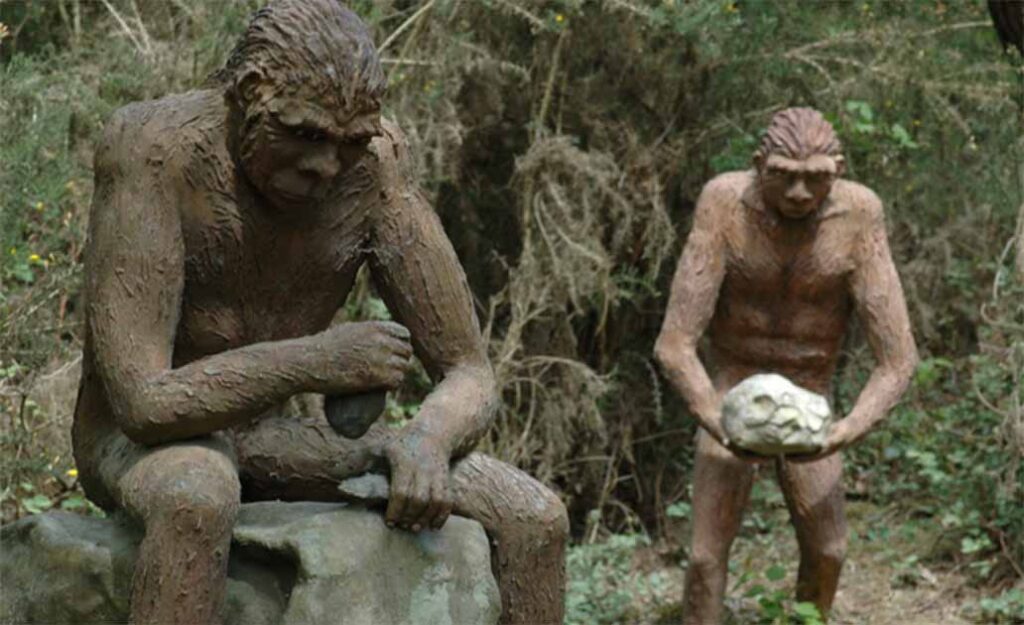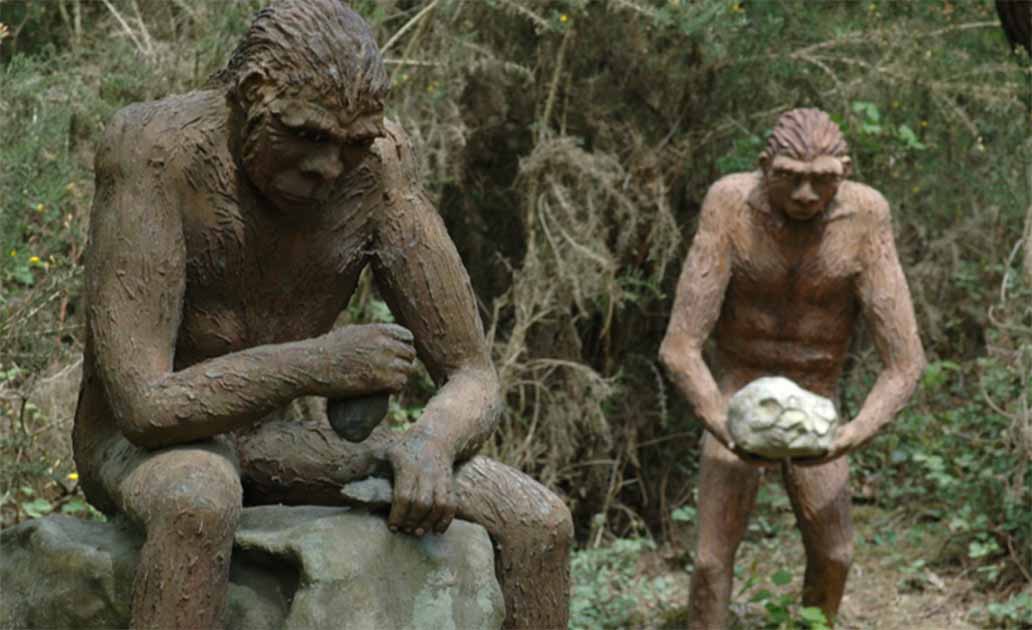

While they first appeared on the lowland savannas of East Africa around two million years ago, the human ancestor Homo erectus soon expanded their range into the Ethiopian highlands. According to a new study just published in the journal Science, those early Homo erectus groups that migrated upward into the Ethiopian mountains were true toolmaking pioneers, as they successfully completed the transition from the Oldowan tool industry to the Acheulean tool industry in approximately 50,000 years.
An Infant’s Jawbone Reveals Truth about Oldowan to Acheulean Transition
The authors of the Science study, led by archaeologist Margherita Mussi from Sapienza University in Rome, were able to accomplish a rare feat. They were able to connect the fossil remains of an ancient hominin or archaic human directly to specific prehistoric tools. This is something that has been incredibly difficult to achieve, given the relative scarcity of identifiable fossil remains from either Homo habilis or Homo erectus, the two human ancestors responsible for the invention of the Oldowan and Acheulean tool industries respectively.
Amazingly, they achieved this breakthrough through a fresh analysis of a single hominin fossil—the lower jawbone or mandible of a prehistoric infant, which was unearthed back in 1981 at the Melka Kunture archaeological complex in Ethiopia’s highlands. The mandible was recovered from excavation Level E of a site designated as Garba IV, where Oldowan tools have also been found. And just one level higher, at Level D, the Garba IV site also produced a collection of Acheulean tools, which undoubtedly meant the species that had lived there had used both.

The mandible found in excavation site Garba IVE in 1981. (M. Mussi et al., Science)
Unfortunately, before now it was impossible to link the infant jawbone to a specific species, which hindered a historical reconstruction of what had happened at the site. But the international team of archaeological researchers responsible for the new study finally solved this problem. Using a technique known as synchrotron imaging, they were able to confirm that the jawbone had belonged to a Homo erectus child, and not to Homo habilis or some other unknown hominin. This had long been suspected, but previous methods of analysis had not been able to make a positive identification.
Furthermore, Mussi and her colleagues were also able to solve the mystery of when the Homo erectus infant had lived. They used advanced paleomagnetic dating techniques to show that the excavation level the child and the Oldowan tools had been buried in was about two million years old. They also discovered that the Acheulean tools in the level above it had been manufactured approximately 1.95 million years ago, which is just 50,000 years later (an extremely short period in geological terms).
Until the discoveries at Melka Kunture, the oldest known Acheulean tools were dated to approximately 1.6 million years ago. But the new study links this technology with Homo erectus settlers who occupied the Ethiopian highlands 350,000 earlier, which makes them the first group from the fossil record to be connected to this toolmaking industry—which presumably makes them the inventors.
The discoveries at Melka Kunture are paradigm-shifting, because they reveal for the first time that Homo erectus completed the transition from Oldowan tools to Acheulean tools approximately two million years ago. Since they were using both simultaneously, they would have seen their Acheulean innovations as an improvement of or supplement to the older technology, and not as its replacement.

An image from a previous study shows Oldowan artifacts, including unifacial cores on limestone (1 and 9); bifacial core made of limestone (10) and on flint (2); polyhedral cores on limestone (11 and 12); subspherical core on limestone (3); whole flakes on flint (7, 16, and 17) and on limestone (4, 5, 6, 13, and 14); and retouched pieces on flint (8 and 15). ( Sahnouni, M. et al.)
Homo erectus, the Planet’s First Master Toolmakers
The Oldowan tool industry first appeared approximately 2.6 million years ago. Examples of Oldowan tools have been found exclusively in Africa, and their invention has been credited to the human ancestor Homo habilis, which was the direct forerunner to Homo erectus. Oldowan tools were made by chipping flakes off one side of a stone with another stone, creating solid rock cores with sharpened edges that could be used to process food by smashing it or breaking it open. The flakes had sharp edges as well and could also be used as tools, specifically to cut plants or the meat of animals.
Acheulean tools represented a modification of the Oldowan style. Flakes were also chipped off stones, but the Acheulean tool makers used larger stones and chipped flakes off both sides, creating the world’s first bifacial tool. What was left after this process was completed were versatile stone hand axes that were usually between five and eight inches (12 to 20 cm) long. These handy stone tools could be used to butcher animals killed for food, cut plants, dig holes in the ground, or cut up trees into smaller pieces of wood for building fires.

Homo erectus tools: Acheulean handaxe, Haute-Garonne France. (Muséum de Toulouse/CC BY-SA 4.0)
Unlike the earlier Oldowan industry, Acheulean tools have been found both inside and outside of Africa. Samples have been recovered during archaeological expeditions in Europe and on the Indian subcontinent, and it wouldn’t be a surprise if they were found even farther east at some point. Homo erectus is credited with inventing Acheulean hand axes, which remained in use for more than one million years.
As the new study shows, the highlands of Ethiopia proved to be the crucible that stimulated the innovations that enabled the transition from the Oldowan to the Acheulean industry. Despite experiencing cooler temperatures and increased rainfall at 6,500 feet (2,000 m) above sea level at Melka Kunture, Homo erectus was able to adapt and survive.
Perhaps the extra challenges associated with living in a mountain environment helped encourage their search for more efficient tools. Whatever caused the change, their transition from using Oldowan tools exclusively to using both Oldowan and Acheulean types established a pattern that would eventually be repeated by Homo erectus groups living elsewhere in Africa and in the world. It would seem the Acheulean innovation had its roots in the Ethiopian highlands, and it would have spread through the process of cultural diffusion from there.